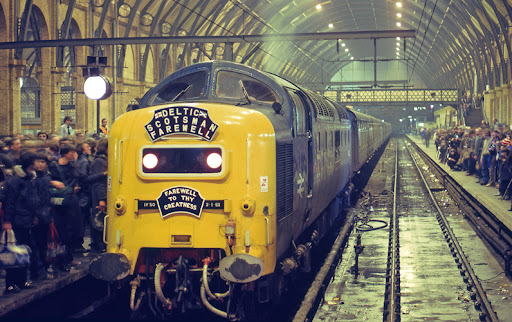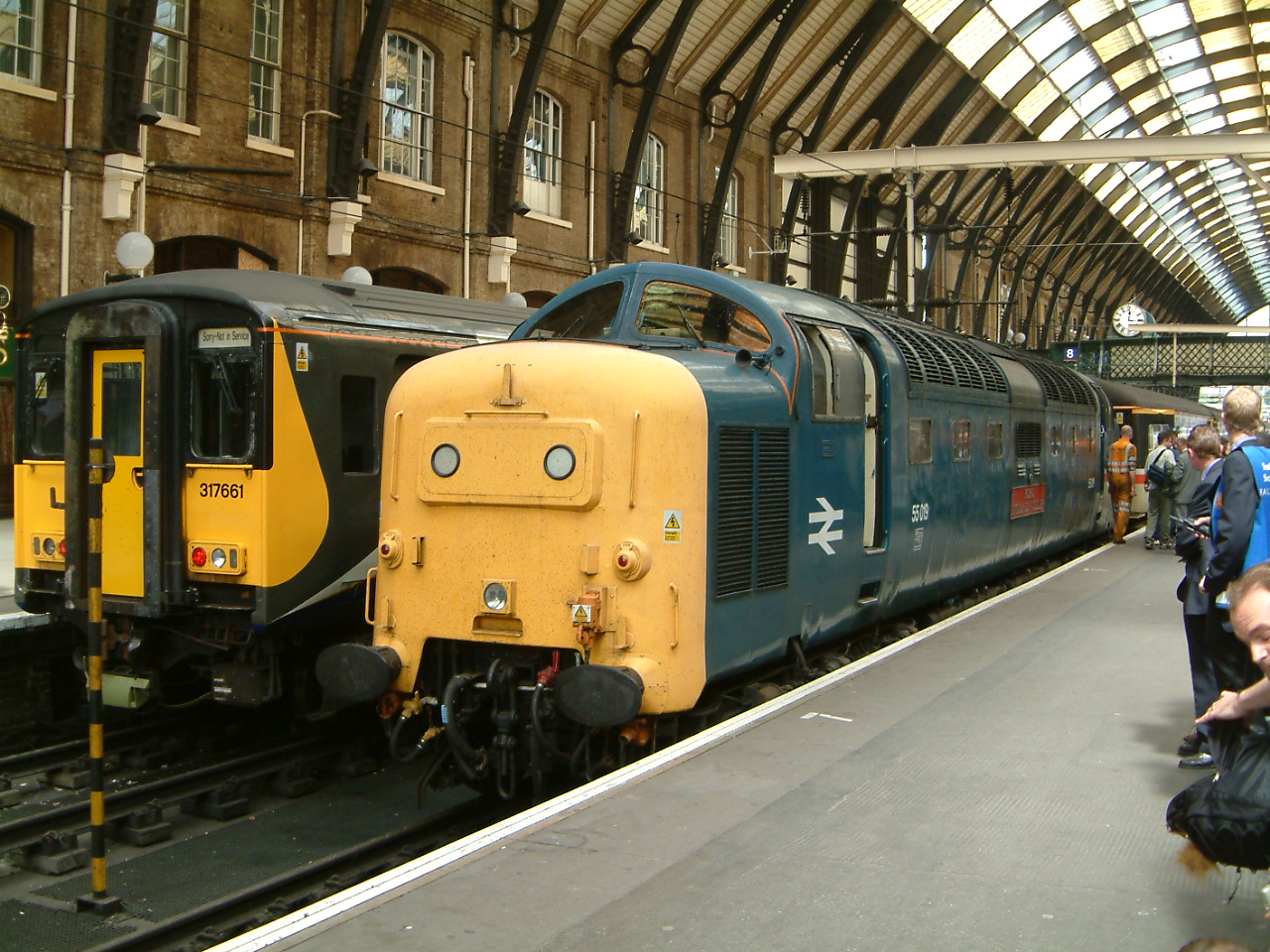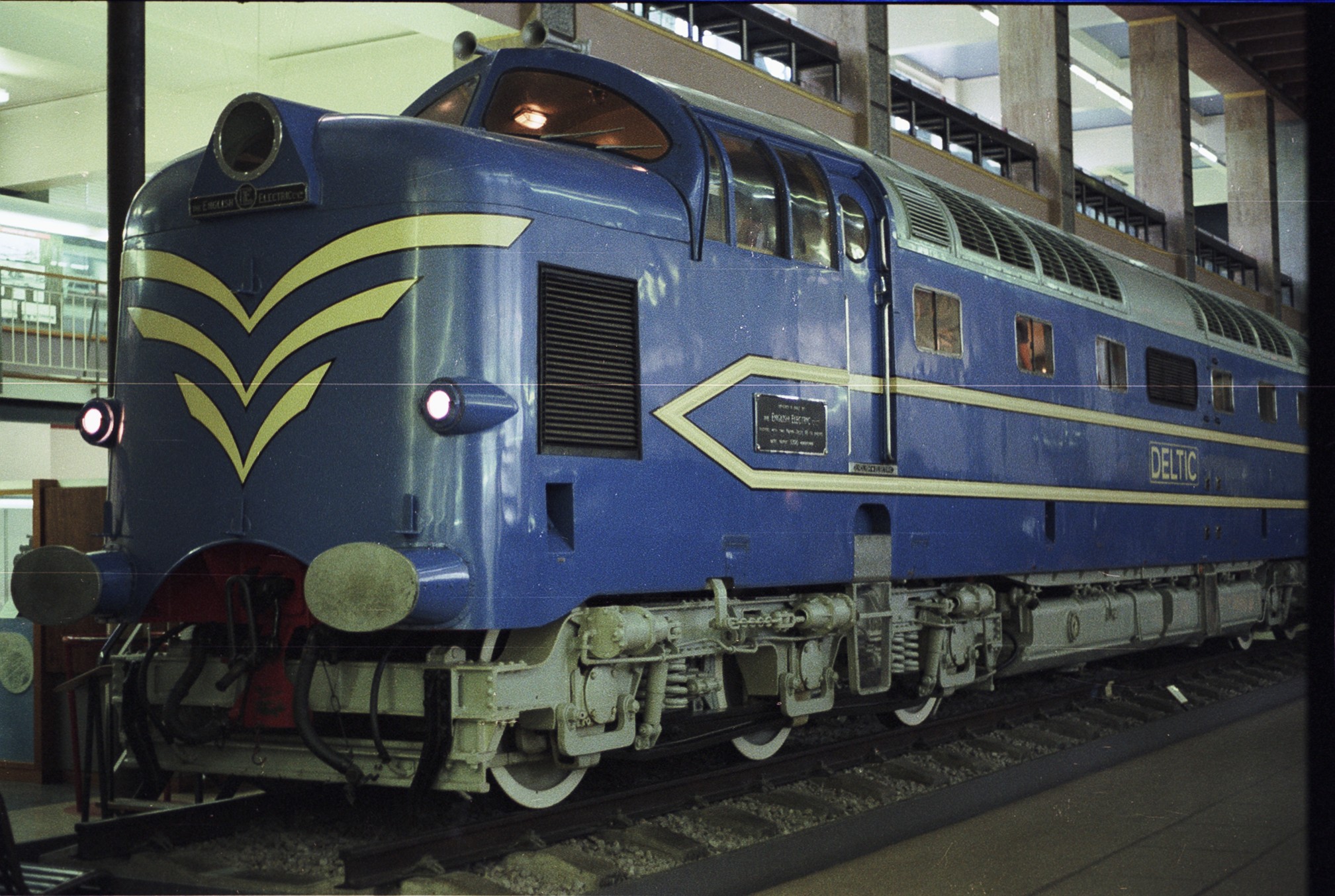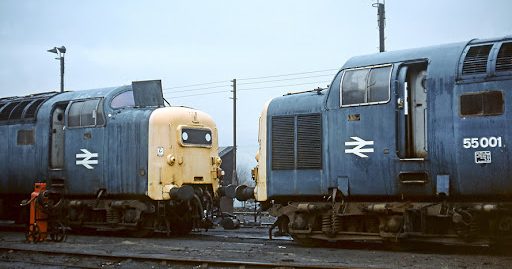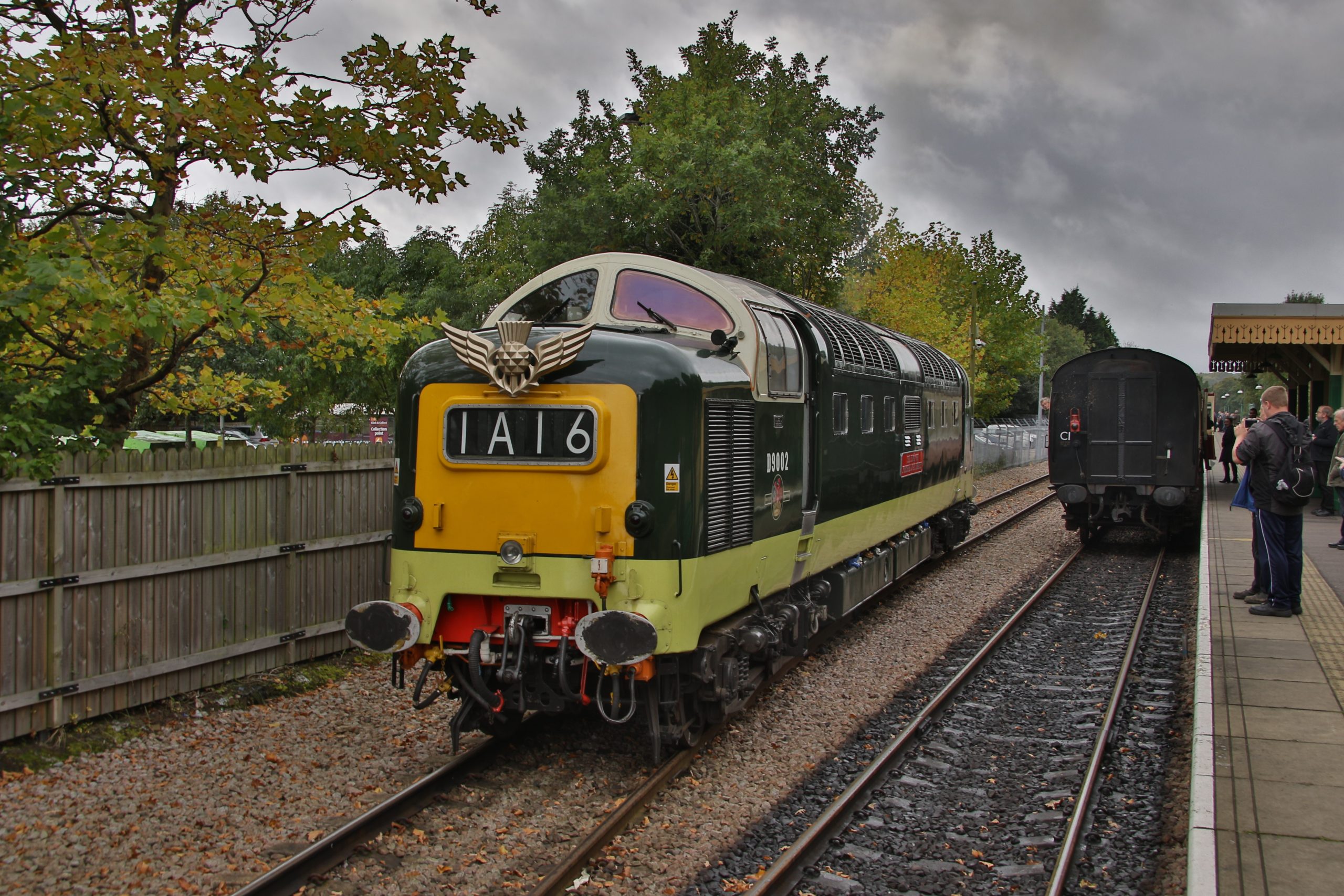Following trials with the prototype ‘Deltic’ locomotive, which was built at the Dick, Kerr & Co works in Preston, an order was placed with English Electric for a production fleet of 22 units (reduced from the originally-planned 23), replacing more than twice that number (55) of Nigel Gresley A4 Pacifics; as steam locomotives require substantial time to clean, fuel, and fire, such a reduction in the number of units could be undertaken without a corresponding reduction in working availability. The locomotives were purchased under a service contract, English Electric agreeing to maintain them, including their engines and generators, for a fixed price; this was British Rail's first such contract. Additional Deltic engines were produced to enable engines to be exchanged regularly for overhaul while keeping the locomotives in service.
The locomotives were assigned to three locomotive depots: Finsbury Park in London, Gateshead near Newcastle, and Haymarket in Edinburgh. They arrived from the manufacturer painted in two-tone green, the dark BR green on top, with a narrower strip of a lighter, lime green along the bottom. This helped to disguise the bulk of the locomotive body. The cab window surrounds were picked out in cream-white. Although delivered without it, they all soon sported the bright yellow warning panel at each end common to all British diesel and electric locomotives, to make them more conspicuous. Very soon, all were named; the Gateshead and Edinburgh Haymarket locomotives after regiments of the British Army from the North-East of England and from Scotland, respectively, while Finsbury Park followed the London & North Eastern Railway (LNER) tradition of naming locomotives after winning racehorses.
By 1966 they began to be painted in corporate Rail Blue with yellow ends, the change generally coinciding with a works repair and the fitting of air brake equipment, the locomotives originally having only vacuum braking. In the early 1970s they were fitted with Electric Train Heating (ETH) equipment to power Mark 2 air-conditioned coaches, while a couple of years later, with the introduction of BR's TOPS computer system, they were renumbered 55 001 to 55 022. In 1979, Finsbury Park restored the white cab window surrounds to their remaining six Deltics, making them distinctive, and some may say ‘celebrities’, although these were later painted over when the locomotives were transferred to York during the rundown of the depot at Finsbury Park.
By the mid-1960s, the Deltic-hauled Flying Scotsman was achieving a 5-hour 55-minute time from King's Cross to Edinburgh with one stop at Newcastle and this was the fastest ever timing, beating the pre-war A4-hauled Coronation service's 6 hours, and without the priority over other traffic accorded to the earlier LNER train. As the East Coast Main Line was upgraded, times dropped still further and by the mid-1970s the Flying Scotsman was reaching Edinburgh in 5 hours 27 minutes, still with one stop at Newcastle for a driver change.
The ultimate Deltic performance came on 2 February 1978 with a run on the 07:25 from Newcastle to King's Cross. In some respects, the run was set up (the driver was about to retire) but the speeds were record-breaking. The locomotive was 55 008 The Green Howards; it was hauling 10 coaches (343 tons gross), and on the leg from York to London it achieved a timing of 137 min 15 sec. This included various signal stops and other enforced speed reductions; the net time is estimated at 115 min 45 sec, an average of 97 mph start to stop. The train achieved 113 mph on the flat between Darlington and York, 114 mph at Offord and 125 mph whilst descending Stoke bank.
In the late 1970s, the Deltics began to be supplanted by the next generation of express trains, the High Speed Train (HST), and the Deltics began to take on secondary roles. British Rail at this time had a general policy of not maintaining small non-standard fleets of locomotives, and thus the class had a limited future. When the HST fleet took over on the main East Coast services it was never likely to be economic to maintain a small non-standard class of locomotive for secondary services. Thought was given to redeploying all or some of the fleet on the Midland Main Line, the Trans-Pennine route between Newcastle and Liverpool, or the North East – South West cross-country route, but this was ultimately abandoned as uneconomic, due to maintenance and crew training costs, and the end of the decade saw the first withdrawals from service. 55 001 ‘St. Paddy’, 55 004 ‘Queen's Own Highlander’ and 55 020 ‘Nimbus’ had all been out of traffic for the best part of two years and heavily cannibalised for spares at Doncaster Works. It was decided that 55 001 and 55 020 were too heavily cannibalised to justify resurrection and they were condemned in January 1980. 55 004 was returned to service.
At that time Deltics were generally run with only limited maintenance until they became unable to continue running and required rescue by other locomotives after breaking down. Typically, the cause would be engine failure, although some Deltics were withdrawn for other reasons. Exchange of operational power units between withdrawn locomotives and running examples was regularly carried out at both Doncaster Works and at Stratford Works. Withdrawn locomotives were then taken to Doncaster Works for stripping and eventual scrapping. For a time, the Deltic scrap line was a major draw for railway enthusiasts.
The National Railway Museum selected 55 002 The King's Own Yorkshire Light Infantry for preservation as part of the National Collection. The Friends of the National Railway Museum sponsored the repaint of 55 002 into original green livery for its last eighteen months in traffic, although it carried its TOPS number rather than D9002. As insurance, in case 55 002 should meet with a mishap during its last months, the withdrawn 55 005 ‘The Prince of Wales's Own Regiment of Yorkshire’ was set aside from breaking up at Doncaster Works until Deltic operation on the main line had concluded.
The final service train run was the 16:30 Aberdeen-York service on 31 December 1981, hauled from Edinburgh by 55 019 Royal Highland Fusilier, arriving in York at just before midnight.
The last train was an enthusiast special, the "Deltic Scotsman Farewell", on 2 January 1982, hauled from King's Cross to Edinburgh by 55 015 ‘Tulyar’ and 55 022 ‘Royal Scots Grey’ on the return. 55 009 ‘Alycidon’ shadowed the train in both directions between Peterborough and Newcastle, in case of a failure of the train locomotive.
Following the farewell, the surviving Deltics were moved to Doncaster Works, where they were displayed en masse in February 1982, before disposal commenced.
The below picture illustrates how many people attended.

